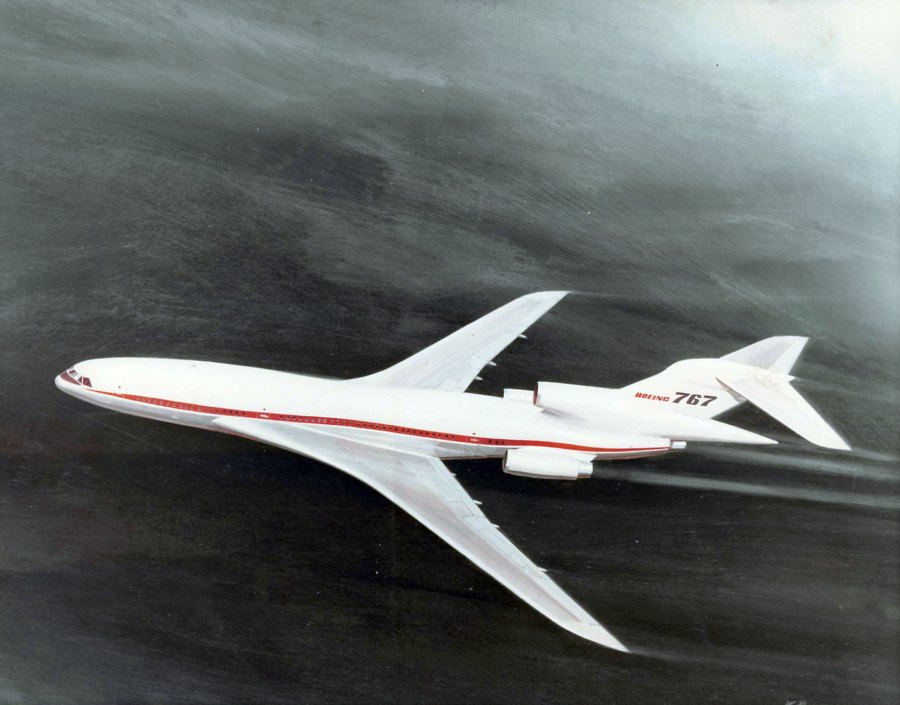In the early 1970s, after the collapse of the SST program due to, in part, the rise in energy prices, Boeing, Lockheed, General Dynamics and NASA looked at the possibility of jetliners designed to fly economically right at the edge of the sound barrier. The idea was that there is an unavoidable spike in drag at Mach 1.00, but it would theoretically be possible to fly at, say, Mach 0.98 at relatively low drag. This would make the aircraft about 100 mph faster than conventional jetliners without being much more expensive. In order to pull this off, the jetliners would need to take advantage of every imaginable aerodynamic trick in the book… most obviously, area rule designing resulting in “wasp waisted” fuselages, and almost no straight lines… all curves. The problem is that this makes aircraft heavier and more expensive to build. Thus, no transonic airliners ever got any further than wind tunnel tests.
Below is a piece of Boeing art showing one of their designs for an Advanced Technology Transport. It was a Model 767 design, dash-number unknown.
